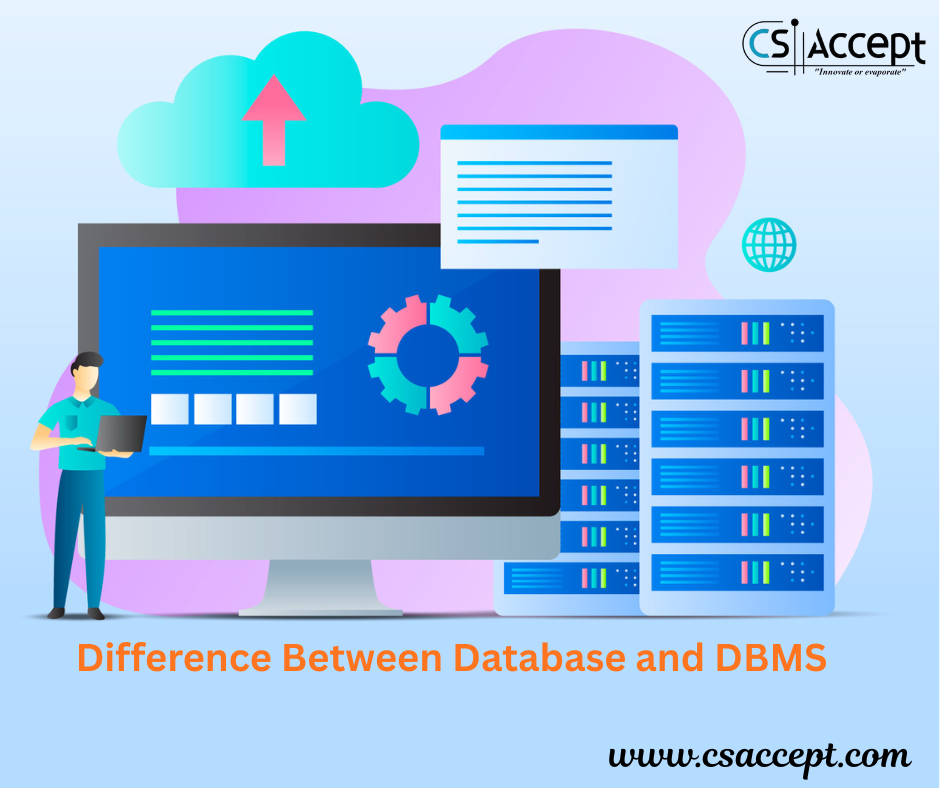
DBMS (Database Management System) Part-1
- Database is such as a collection of structured data such as records, fields ete.
- The management of data involves defining the structures for storage of information and providing the mechanism for manipulating information.
File System: – In a file system, data is directly stored in set of files.
It contains flat files that have no relation to other files (when only one table is stored in single file, then this file is Known as flat file).
1-Data Redundancy and Inconsistency: –
This redundancy is storing the same data multiple times lead to several problems.
- Data Redundancy:
Data Redundancy refers to the to the duplication the data, let’s say we are meaning the data of a college.
Where a student is enrolled for two courses, the same student details in such case will be stored twice, which will take more storage than needed.
Data redundancy often leads to higher storage costs and poor access time.
- Data Inconsistency: –
Data redundance leads to data inconsistency, let’s take the same example that we have taken above, a student is enrolled for two courses and we have students address stored twice, now let’s say student requests to change his address, if the address is change at one place and not on all the records then this can lead to data inconsistency.
• Different file system
• Different programming Language
2- Difficulty in Accessing Data: –
Accessing data is not convenient and efficient in file processing system.
3. Data Isolation: –
Data and are scattered in various files, and files may be in different formats, writing new application programs to retrieve the appropriate data is difficult.
4. Data Integrity: –
The data must satisfy consistency constant which are difficult in file system.
Data Integrity means that the data contained in the database in both correct and consistent for this purpose of data stored in database must satisfy correct and constraints.
5- Atomicity Problems: –
Atomicity of a transaction refers to” all or nothing”, which means either all the operations in a transaction executes or none.
Any operations on database must be atomic.
This means, it must happen in its entirely or not at all.
6- Concurrent Access Anomalies: –
Multiple users are allowed to access data simultaneously. This is for the sake of better performance and faster response.
7- Security Problems: –
Data should be secured from unauthorised access, e.g. A student in a college should not be able to see the payroll details of the teachers, such kind of security constraints are difficult to apply in file processing systems.
Database should be accessible to users in limited way.
Each user should be allowed to access data concerning his requirements only.
Levels of obstruction: –
View Level
View 1 —————- View 2 —————- View n
|
Logical level
|
Physical level
Architecture of Database System
- Physical Level: It describes how the records are stored.
- Logical Level: It describes what data is stored in the database and what is the relationship among the data.
- View Level: – It consists of application program that hide of the details of datatype views can be used hide information for security purpose.
Example: Employee Salary
Instance and Schema: –
Schema: –
*Schema is a logical structure of database.
*It defines the overall design of the database.
Example: Customer Account, Information Customer, ID, Transaction.
- Physical Schema: – It is the database design at the physical level.
- Logical Schema: – It is the database design at the logical level.
- Sub Schema: – It defines the various schema as the view level. It shows the different views of the database.
Instance: – It is the actual content of the database at a particular point of the time.
Physical Data Independence: –
- The ability to modify the physical schema without changing the logical schema.
- The interface between the level should be well defined so that changes in some parts do not influence other part.








